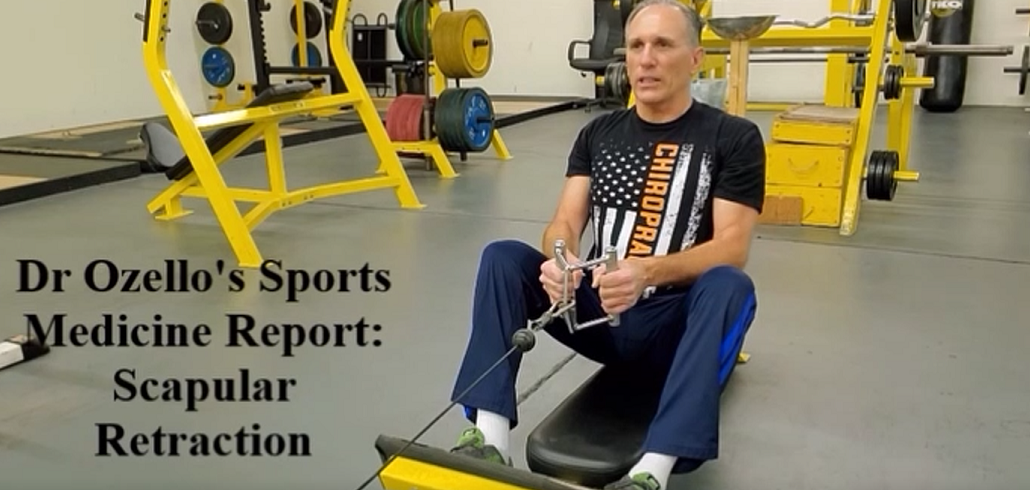Strengthen the entire posterior shoulder muscles to develop joint stability, proportional strength and reduced injury risk. Build strength and endurance in the scapular retractor muscles, (Rhomboid major, rhomboid minor, middle trapezius and lower trapezius) with isometric resisted scapular retraction. Enhance strength, coordination and endurance in the scapular retractor muscles, posterior deltoid and posterior rotator cuff muscles (Supraspinatus, infraspinatus and teres minor) by performing the Y-T-W-L exercises. Build stability and strength in the scapular retractor muscles, posterior deltoid and posterior rotator cuff muscles with the kneeling and standing reverse pitch. Strengthening the scapular retractors, posterior deltoid and posterior rotator cuff muscles will help to prevent and rehabilitate conditions such as scapular dyskinesis, subacromial impingement syndrome, internal impingement syndrome, long head of the biceps tendinopathy (LHBT), rotator cuff syndrome and upper cross syndrome.
Resisted Isometric Scapular Retraction: Strengthens the scapular retractor muscles, (Rhomboid Major, Rhomboid Minor, Middle Traps and Lower Traps.)
Hold thoracic spine (Midback) straight.
Keep cervical spine (Neck) in line with thoracic spine.
Pull scapulae (Shoulder Blades) toward each other.
Pinch inner borders of scapulae together.
Hold an isometric contraction for two to six seconds.
Begin with a two second hold and gradually build to six seconds.
Release the contraction and slowly return to starting position by controlling eccentric (Negative) phase of motion.
Start with the number of repetitions that you can perform with perfect technique and gradually increase to fifteen reps.
Use a variety of grip widths (Narrow, medium and wide).
Use a variety of grips (Neutral, supinated and pronated).
Use a variety of resistance angles (Horizontal, vertical and anywhere in between).
Y-T-W-L Exercises: Prone on bench, incline bench, fitball, training table, chiropractic table or floor.
Y – Shoulders abducted on hundred and fifty degrees. Thumbs toward ceiling.
Retract scapulae.
Slowly raise arms through a symptom free range of motion.
Slowly lower arms then relax scapulae.
Control eccentric contraction.
Build to fifteen reps.
Intermediate: Hold scapular retraction throughout entire exercise.
Advanced: Hold isometric contraction for two to six seconds.
T – Shoulders abducted ninety degrees. Elbows extended. Palms toward floor.
Retract scapulae.
Slowly raise arms through a symptom free range of motion.
Slowly lower arms then relax scapulae.
Controlled eccentric contraction.
Build to fifteen reps.
Intermediate: Hold scapular retraction throughout entire exercise.
Advanced: Hold isometric contraction for two to six seconds.
W – Shoulders abducted ninety degrees. Elbows flexed ninety degrees. Thumbs toward ceiling or palms toward floor.
Retract scapulae.
Slowly raise arms through a symptom free range of motion.
Slowly lower arms then relax scapulae.
Control eccentric contraction.
Build to fifteen reps.
Intermediate: Hold scapular retraction throughout entire exercise.
Advanced: Hold isometric contraction for two to six seconds.
L – Shoulders abducted ninety degrees. Elbows flexed ninety degrees. Shoulders internally rotated. Thumbs toward ceiling or palms toward floor.
Retract scapulae.
Externally rotate shoulders through a symptom free range of motion.
Slowly internally rotate shoulders.
Control eccentric contraction.
Build to fifteen reps.
Kneeling Reverse Pitch: Kneel with one knee and one hand on a sturdy training table or exercise bench.
Hold spine straight and keep neck in line with spine.
Allow shoulder and shoulder blade to stretch downward by hanging your arm as low as possible with palm facing backward.
Without shrugging the shoulder, retract the shoulder blade by pulling it toward the spine.
Bend your elbow and raise your arm as far back as possible at a ninety degree angle from the body.
Rotate the shoulder upward until the palm faces the floor.
Lower your arm in reverse manner.
Breakdown the motion into three steps while perfecting your technique.
Concentrate on each phase and develop perfect technique.
Perform the exercise in increments until the motion becomes flawless.
Once the motion is seamless begin to utilize one fluid motion.
Begin with the number of repetitions that you can perform with perfect technique and progress to fifteen.
Execute one set in the beginning and slowly advance to three sets.
Perform this exercise after you’ve finished your upper body training.
Train both sides.
Standing Reverse Pitch: Backwards throwing motion.
Stand up straight with feet shoulder width apart.
Hold right hand in front of left thigh. Palm facing backwards.
Retract both shoulder blades by pinching bottom corners together.
Bend right elbow ninety degrees and raise right arm until it is parallel to floor and pulled backward as far as possible.
Rotate shoulder backwards until palm faces forward.
Lower arm in exact opposite manner.
Use no resistance until your technique is perfect.
Breakdown motion into three steps while perfecting your technique.
Concentrate on each phase and develop perfect technique.
Perform the exercise in increments until motion becomes flawless.
Once the motion is seamless begin to utilize one fluid motion.
Begin with number of repetitions you can perform with perfect technique and progress to fifteen.
Execute one set in the beginning and slowly advance to three sets.
Perform this exercise after you’ve finished your upper body training.
Train both sides.
Utilize these four posterior shoulder strengthening exercises to build scapular stability, correct strength imbalances, improve posture, increase shoulder function and decrease shoulder injury risk.
Disclaimer: Viewing this video does not take the place of seeing a medical professional, receiving proper training in the medical profession or working with a fitness professional. Please visit a medical professional for evaluation, diagnosis and treatment. Please work with a fitness professional to learn proper exercise technique and to develop a proper training program. Never perform an exercise that elicits or intensifies symptoms. If an exercise elicits or intensifies symptoms, stop immediately and use a viable substitute. Please receive proper medical training before attempting these medical procedures.
Dr Donald A Ozello DC of Championship Chiropractic in Las Vegas, NV
Web Site: http://www.championshipchiropractic.com/
Blog: https://www.championshipchiropractic.com/wordpress/
Twitter: https://twitter.com/drdozellodc
Facebook: https://www.facebook.com/Championship-Chiropractic-280141628688300/
LinkedIn: https://www.linkedin.com/in/dr-donald-a-ozello-dc-716b3233
YouTube: https://www.youtube.com/user/drdozellodc/videos
“Running: Maximize Performance & Minimize Injuries” https://www.amazon.com/Running-Performance-Chiropractors-Minimizing-Potential/dp/1493618741

